Maven C.2 10X28 Binocular and CS.1A 15-45X65 Spotting Scope Review
Hunting and optics go together like peanut butter and jelly. They’re almost made for one another, but sometimes it can get messy. Maybe you used too much jelly, maybe not enough peanut butter, or maybe you used the wrong bread. Maybe, you made your sandwich and realized you weren’t really in the mood for it in the first place so you decided to go in another direction. Or maybe you made that peanut butter sandwich so dang good that you’re tempted to make another.
Who’s hungry for some PB&J?!
While optics and hunting do go together quite well, you still have to find the right combination of ingredients based on your hunting style, your budget, and your needs to make it work the right way. For the remainder of this article, I’ll be diving into my experience with two Maven products; the C.2 10x28 compact binoculars and the CS.1A 15-45x65 compact spotting scope. You’ll find out why I paired these two together, what my thought process was behind that decision, and how it ultimately worked out in the end. So, go get that sandwich, bust the crust off (if you’re into that kind of thing), and let’s dive in!
Why I have the Maven CS.1A Spotting Scope and C.2 10x28 Binoculars
First things first, let’s address the elephant in the room and talk about why I had these in the first place and also why I’m writing this. I’ve been known to write a few articles in my day and was contacted by Maven to see if I’d be interested in trying out any of their glass. There was no expectation of what I was supposed to do once I received the optics and no expectation of what was to come of it. All that was said was “give them a try and let us know what you think.” It seemed like a pretty sweet deal so I accepted.
For clarity's sake, no money exchanged hands, I returned the items after the hunting season, and I’m really only writing this because I really do enjoy writing and I think it’s only fair to offer up my thoughts based on my experience so others can learn too. Optics of any kind are expensive so being able to try some out free of charge allowed me to approach this whole thing in a way that kept my dog out of the fight (aka my wallet).
My Hunting Style and How I Ran These Optics
I live in the Pacific Northwest and primarily hunt Blacktailed Deer and Roosevelt Elk. Here on the west side of the state, it’s pretty close quarters. There’s thick underbrush, the weather generally sucks in October, and I find myself bouncing between doing a little bit of glassing and a little bit of brush busting.
I traditionally run a pair of 8 power binoculars that are great for scanning the forest floor without blowing past what’s right in front of me, however, they’re not so great for longer distance glassing (I learned this very clearly when I compared them to the ultimate power of a set of 18’s). Because I bounce back and forth between glassing and hunting the forest, I thought maybe a good approach to this would be to have a pair of 8’s or 10’s on my chest along with a small spotter in my pack for longer glassing needs when I think I see something out there and want to get a closer look.
I also do a lot of hiking so weight is always a consideration, especially when backpack hunting. I’m very conscious of what goes into my pack and want to make sure it’s what I NEED rather than having something there that’s just along for the ride.
My approach was that if I were to be hauling around a spotting scope, I wanted to make up for that added weight by using a smaller pair of binoculars that weighed less; something I could slip into a small pocket on my pack or easily dangle around my neck. On the scope side of things, I didn’t want anything too large because I wasn’t going to be using it all the time. In my head, I had a scenario playing out where I was glassing here and there with lightweight binoculars, finding something of interest, then pulling out the spotter for a closer look if I needed it. That was the plan and that’s what happened.
Maven C.2 10x28 Binoculars Review
I think of my optics like I do the rest of my gear; it either works or it doesn’t work and I do my best to keep my expectations in check. With that said, here are a few of my thoughts on the compact C.2 10x28 Binoculars.
Highlighted Specs
Mid-Range Model
Size: 4.6 in.
Weight: 12.4 oz.
Durable, Well-Balance, and Lightweight Polymer Frame
Extra-Low Dispersion ED Glass
Fully Multi-Coated Lenses
Exceptionally Clear, Bright, High Contrast Image
Excellent Color Fidelity
Waterproof and Fog Proof
Lifetime Warranty
Very Light and Compact
This one is pretty obvious because these binoculars are your standard compact size. With a 28mm objective, you’re not going to have a very heavy set of binos in your hands which is both a blessing and a curse. It’s a blessing because you’re not hauling around some heavy piece of gear, but it’s a curse because they’re light and can be less stable when looking through. Depending on how powerful your binoculars are, the better or worse that gets. These being 10 power, I think the weight is balanced and the size is perfect for what I was aiming for and expecting.
You can throw these around your neck on a minimal harness setup or toss them into the pouch on your waistbelt. I’d obviously much prefer a larger diameter objective for better light-gathering performance, but when you that route, things get really big really fast. For what they’re built for, these work great and would be a great addition to any backpacking trip or hike or for anyone looking to shave as much weight as possible.
Build Quality
I’d say the build quality on these is “good.” At the time I’m writing this, they’re only $225 so you can’t expect “GREAT” or “EXCELLENT,” however they still feel very rugged and very capable of surviving years of hunting if they’re well cared for. For what they are, they’re built VERY well, perform VERY well, and meet the needs for which they’re built. I can’t attest to the long-term performance since I only had them for a season, but I think they’ll do just fine.
Eye Cups
Maybe it was the pair I received, but when I went to extend the eyecup relief, it just kept turning and turning and finally popped off. This is weird to me because normally there’s a hard stop when you go to twist it out. Again, maybe it was the pair I had, but I think it’s worth mentioning. I don’t know if this is good or bad, just anecdotal.
That said, the eyecups and the eye relief were adequate. Very easy to look through with no issues to report.
Hardware Tolerances
The only thing I found frustrating about these binoculars was how loose everything felt. I had to continually adjust and re-adjust the binoculars to fit my face because they kept bending when I didn’t want them to. Even when I was holding them, they’d adjust themselves slightly if I was holding onto them too tight. Again, at $225 you can’t expect crazy tight optics. Or can you? I personally don’t know what goes into the creation of these things. I’m just an end-user and to me, I’d like to see them tighter so they hold whatever position you need them to be in.
That said, they ARE designed to fold away and be compact so maybe that’s just the nature of the beast.
Texture
By far my favorite feature of these little binoculars. They have a really solid anti-slip texture to them that makes holding them when they’re wet very nice. This is also part of the durability that comes from Maven. You don’t have to worry about what happens if you drop them because the skin of these things is pretty solid.
Maven CS.1A 15-45x65 Spotting Scope Review
So, here’s what I think about this compact little spotting scope.
Highlighted Specs
Mid-Range Model
Size: 11.4 in.
Weight: 40.4 oz.
Durable, Well-Balanced, and Lightweight Magnesium / Aluminum Frame
Extra-Low Dispersion ED Glass
Fully Multi-Coated Lenses
Exceptionally Clear, Bright, High Contrast Image
Excellent Color Fidelity
Waterproof and Fog Proof
Lifetime Warranty
Small and Compact
At my core, I’m a backpacker first and foremost. I’m highly aware of what goes into my pack in terms of both weight and size. Even if it’s light, but an odd shape or too big, I tend to lean toward leaving it at home. The problem with hunting is that most hunting items are larger and heavier, especially when it comes to all things optics.
When this spotting scope showed up and I held it for the first time, I remember thinking to myself “Oh, well this isn’t bad at all!” For having a 65mm objective lens while being able to crank that thing out to 45mm, it’s extremely compact and light. If you’re someone who favors spotting scopes and you do a lot of backpacking, this Maven CS.1A spotter is going to pair really nicely with your hunting style. It’ll fit nicely into the top of a pack for quick access or into a side pocket for even easier access.
Rugged and Textured
Similar to the bino’s, this spotter has that durable and grippy texture on it. More importantly, though, you get the feeling that you can drop this thing and not worry about it getting scratched and it is nice to know that if it’s wet out and you have a tendency to fumble your gear, at least you have some built-in grip or texture.
As for ruggedness, I think this thing was clearly built for the mountains and I see no reason to think otherwise. For as small as it is, it has some weight to it without being too much. It has just the right amount to where if this thing could talk it would say “Hey man, don’t you worry your pretty little head about me. I’ll be fine. You just worry about pointing me in the direction of some critters and I’ll do the rest.”
Quality Build
From one end to the other, the CS.1A is quality. The collar turns nice and smooth, the eyecup has a great feel to it, and the glass is no doubt quality. As I mentioned above, it’s going to last you season after season even if you don’t exactly treat it very well. There are no weird tolerance issues, no rattling, or any part of the scope that makes you wonder if it’ll hold up its end of the deal. Maven clearly makes a quality optic and that’s really all there is to say about it.
Performance
I hesitate to go too far in-depth on performance because I’m not a spotting scope expert. It’s pretty clear to me this scope can do the work and do it well, but I’m going to straight-up admit that I could use some practice with a spotting scope. What I can say is that if you’re looking for a quality scope at a reasonable price of $800, you’ll be happy with your purchase. Beyond that, performance really comes down to user expectations and how they are at using a scope.
Results In the Field
Overall, I was extremely pleased with what I experienced pairing these two optics together. I wanted a compact set of binoculars for quick glassing and a compact spotter to get a closer look. That’s what I wanted and that’s what I got. You never really know how your plan is going to pan out until you’re in the field and I fully expected my little science project to not go how I intended, but it did. There was one specific moment where it literally happened how I envisioned it from the start.
I was hiking back to my camp at dusk when I rounded the corner where there was a nice view of a hillside. The sun was just right so stopped, pulled out the binoculars, and quickly glassed the hill looking for any deer that might be out grazing. It took me about 15 seconds to spot two deer across the drainage from me, but with the limitation of only having 10’s, I quickly dropped my pack and pulled out the spotting scope for a closer look.
The deer were a ways off so it wasn’t like I was going to be able to count the hairs on their heads, but I was able to tell that these two deer were actually two bucks. For me, that’s all I really needed to know. I’m not needing to count points or judge a score. I’m only needing to know if it’s a legal buck and get a general sense of its age. In this case, they were what I would call middle-aged bucks that I would gladly have taken had I been a little closer.
The scenario I had cooked up in my brain where I’m hiking, doing some quick glassing, then pulling out the scope for a closer look actually happened in the field. If this story is anything similar to your style of hunting, I’d highly suggest outfitting yourself with something very similar. The pairing of a compact set of binos with a compact spotting scope for backpack hunts is about as efficient as it gets.
The only downside to this setup is that it’s not exactly optimized for extended glassing sessions. If you plan on plopping your butt down for 6 hours of glassing, then I’d suggest setting yourself up with a set of binoculars you can mount on a tripod and a larger spotting scope. Maybe a set of 10’s and a spotter where you have a stable viewing platform and the power of scope if you need a closer look.
All in all, pairing a compact set of 10’s with a compact spotter worked great for what it is and it met my expectations.
Final Thoughts and Key Takeaways
Even though my little experiment went well, it made me realize that I’m not much of a spotter-type guy. I think they’re an amazing backcountry tool and I envy anyone who is an expert with them, but after having compared a few spotting scope experiences with others where I use a pair of 15 or 18 power binoculars on a tripod, I think I’d much prefer the latter for what I do. Everyone is different and mileage may vary, so you just need to figure out what works best for you and your specific hunting conditions.
A larger, more powerful pair of binoculars paired with my current 8’s is a killer combination where I hunt. They’re both great for glassing for long periods of time and offer a nice spread of options when it comes to gathering more information on what’s downrange. I prefer the field of view of a set of bino’s over a spotter, but I also haven’t played around much with a BIG spotting scope so there’s a chance I could still have my mind changed on that. The only issue there is I don’t know if I’d be willing to pack around a bigger spotter knowing I might not be using it as often.
I hope this article was helpful, if it was, please let me know! If you have any suggestions on combinations to try or have experiences to share, please share them! Also, if you have any questions at all, don’t hesitate to reach out to me directly.
Maven C2 10X28mm Compact Binocular
Shop Maven Optics
Shop Amazon
Maven CS.1 15-45X65 Spotting Scope
Shop Maven Optics
Shop Amazon
Emory, By Land
Thanks for stopping by! If you have any questions for me, you can leave a comment below or shoot me a personal message at emory@byland.co.


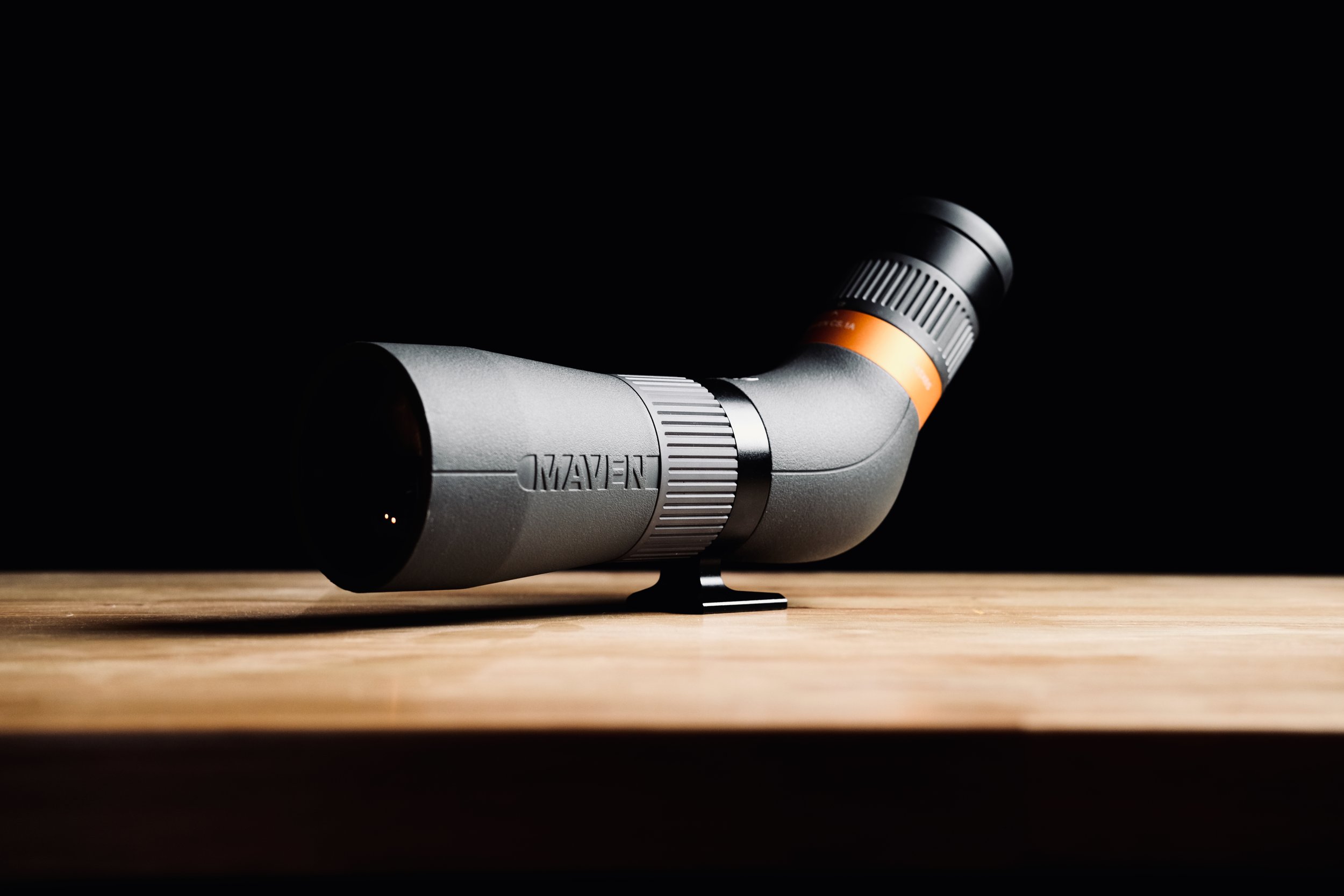
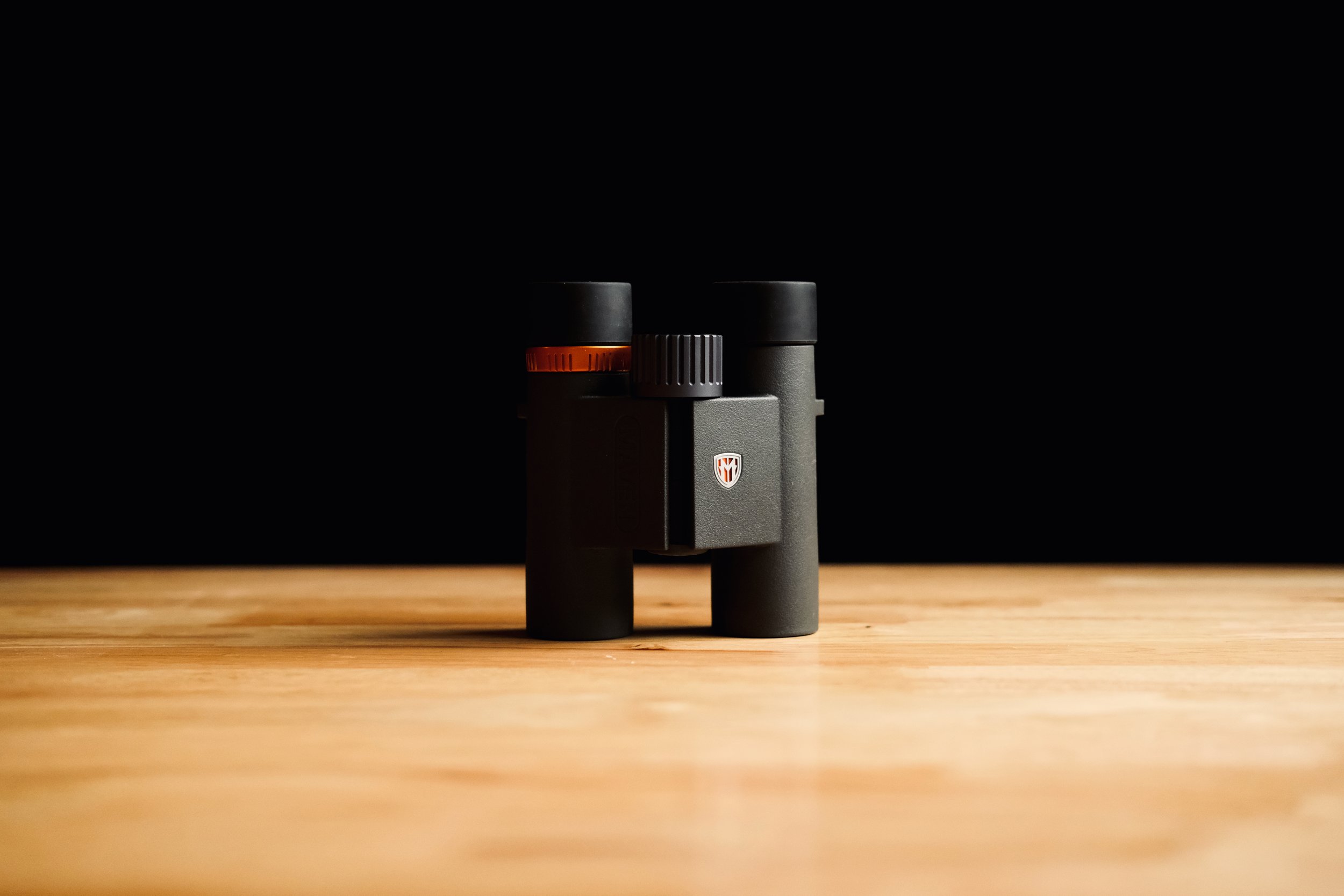



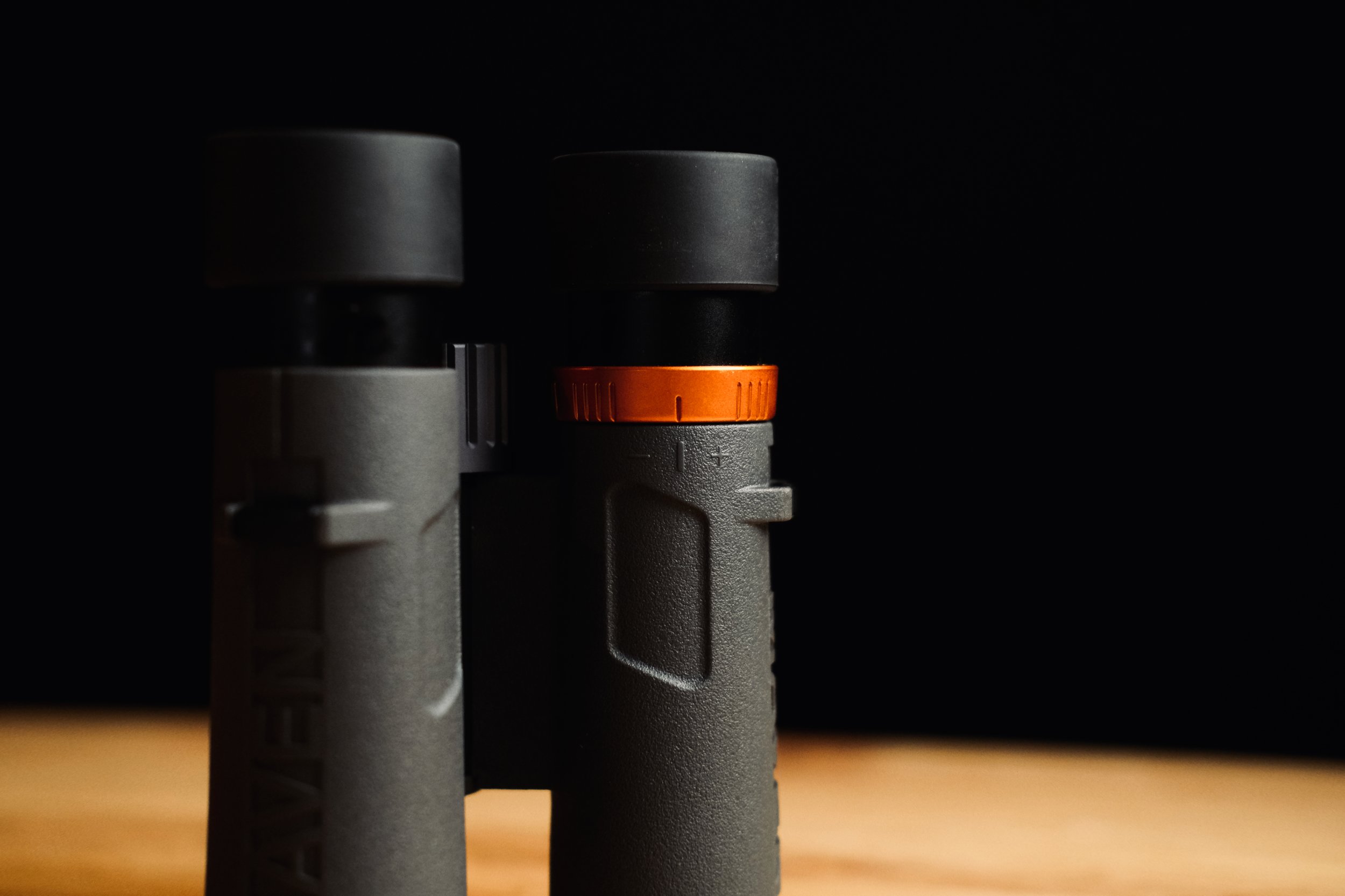

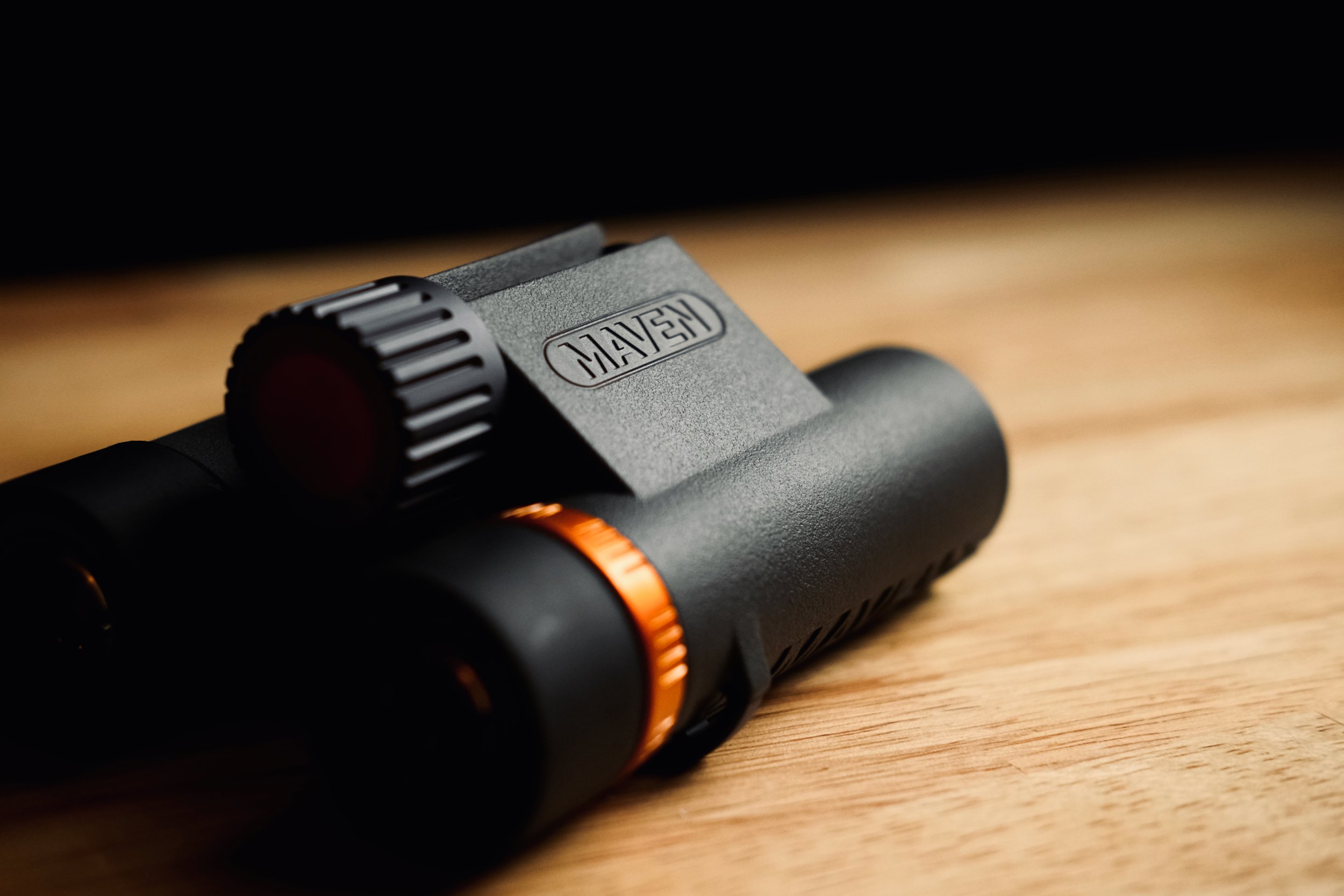




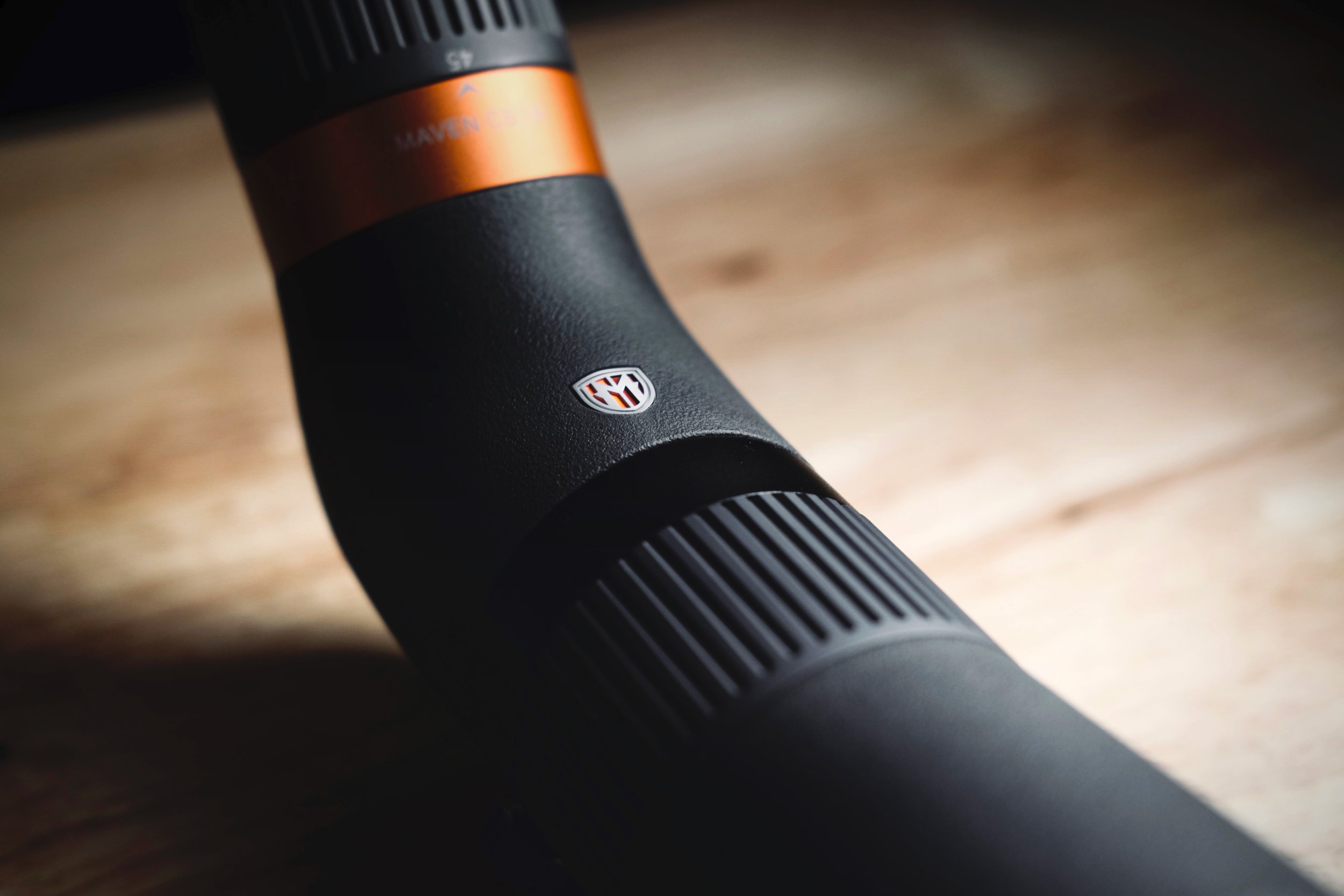
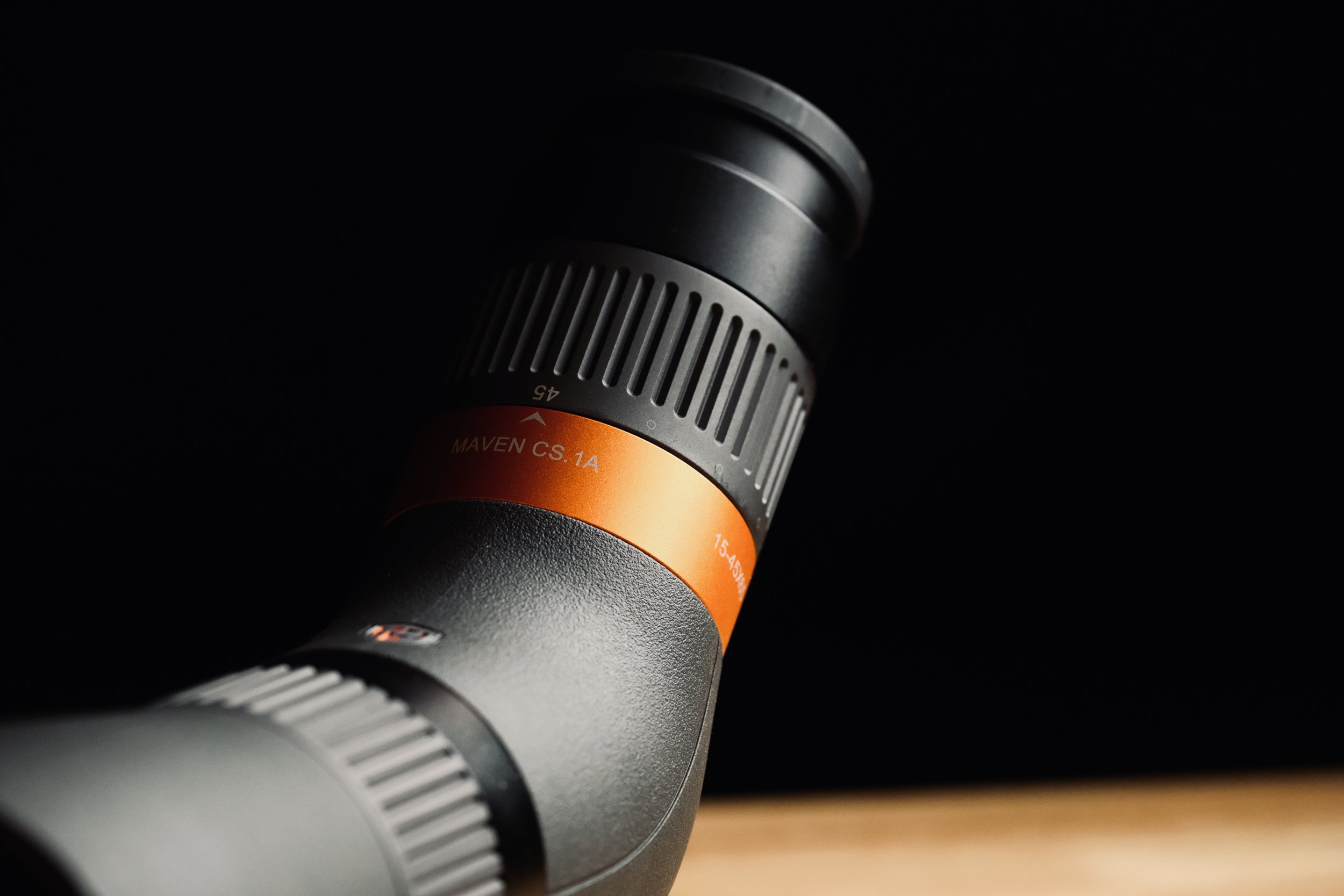
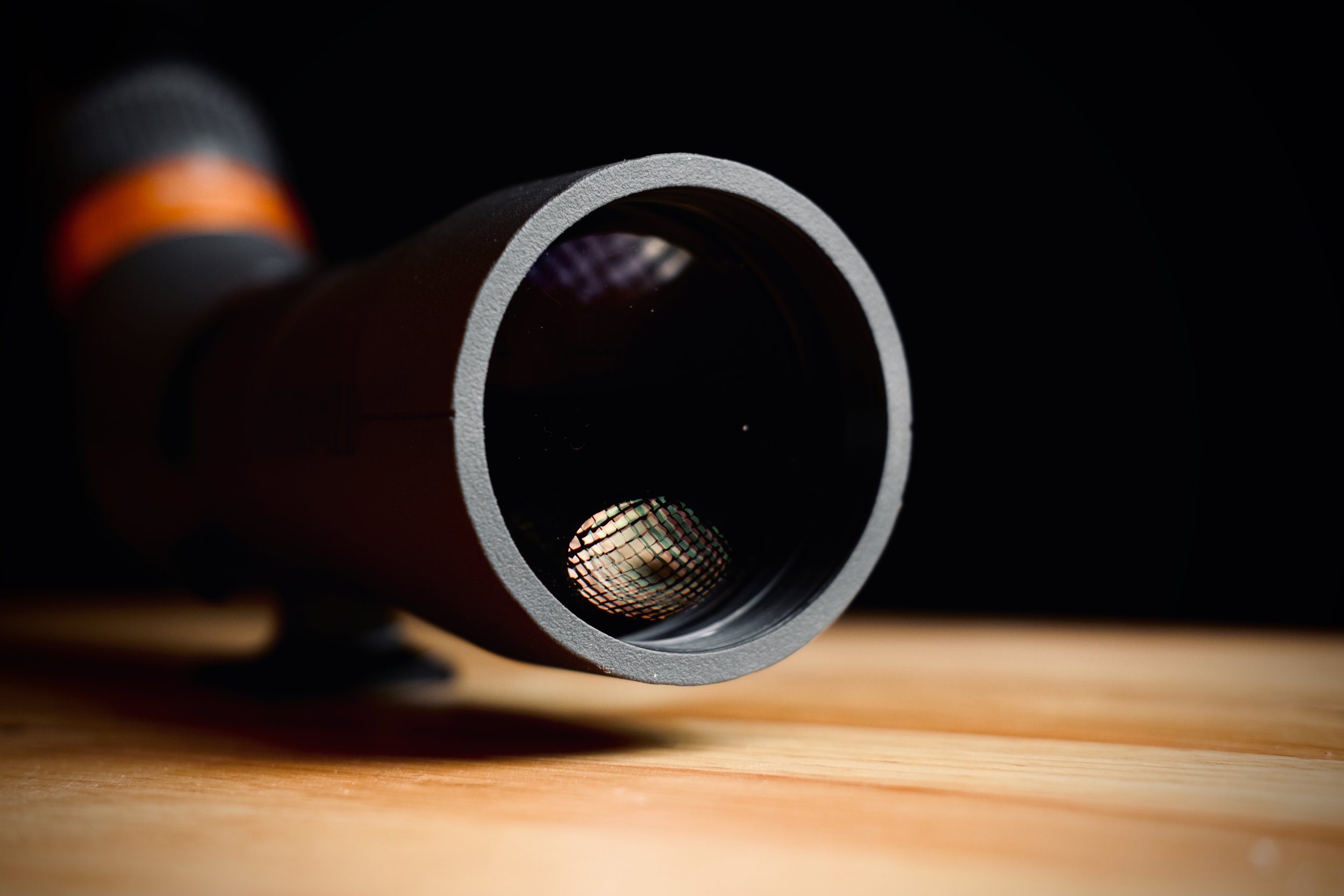
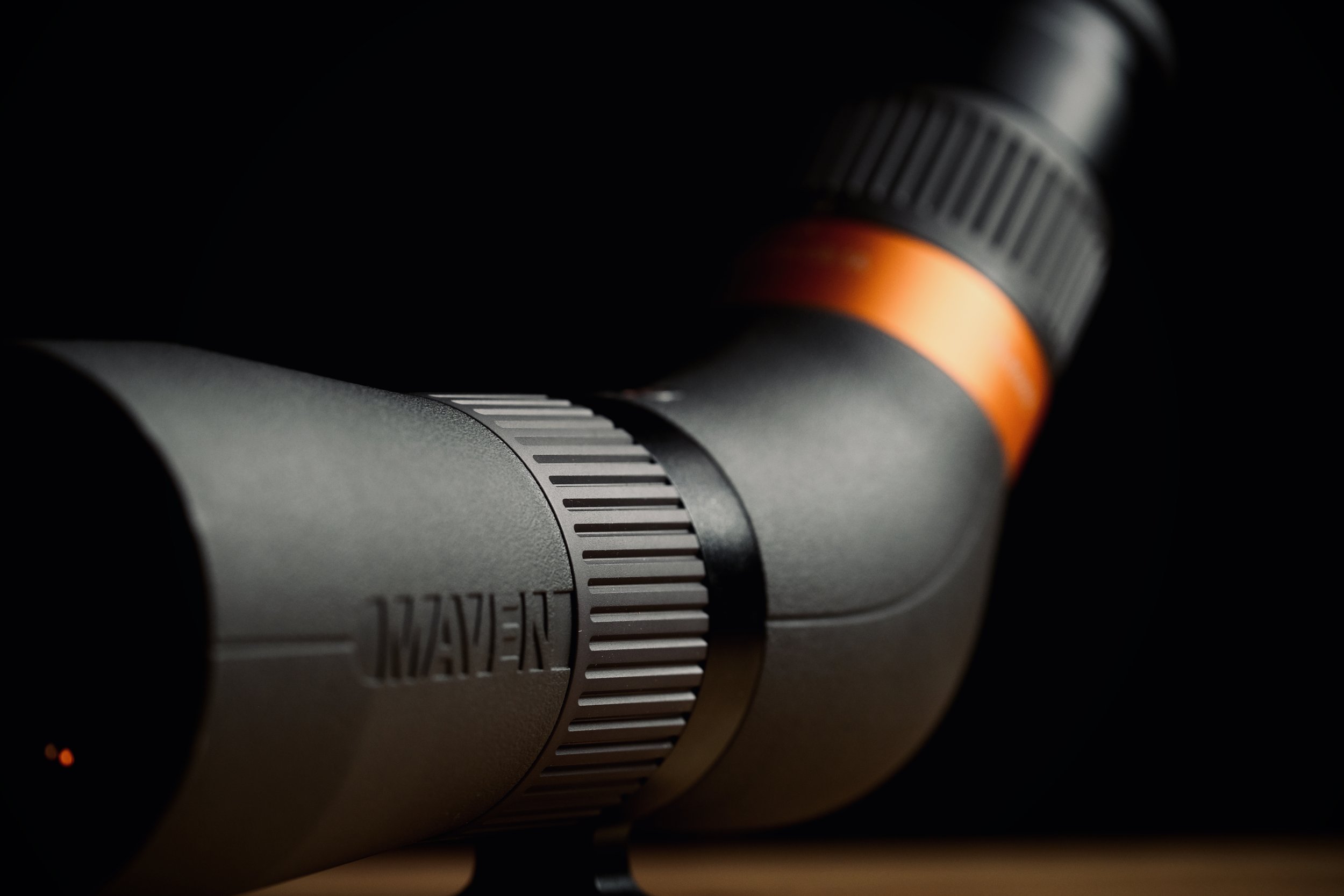
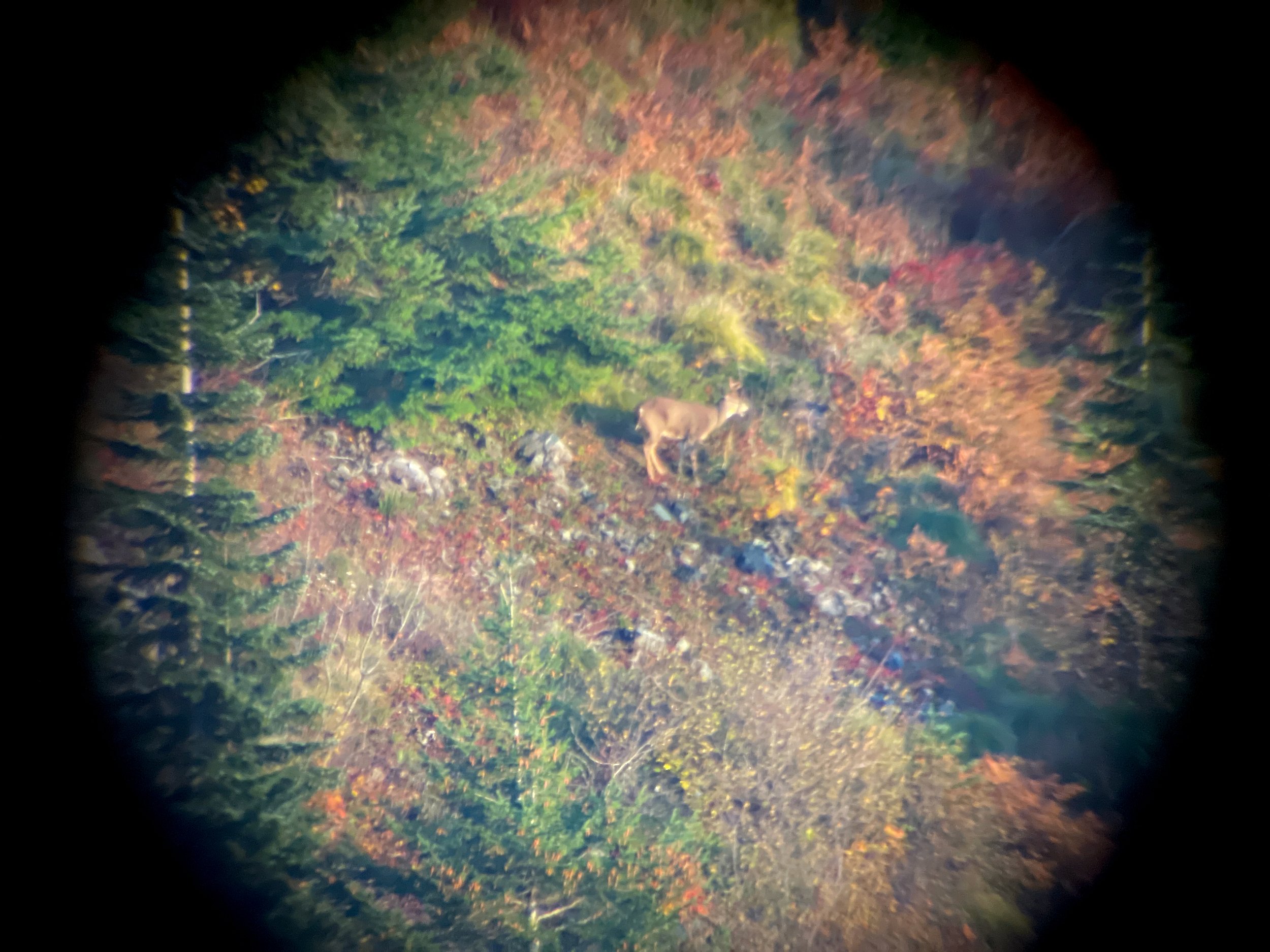




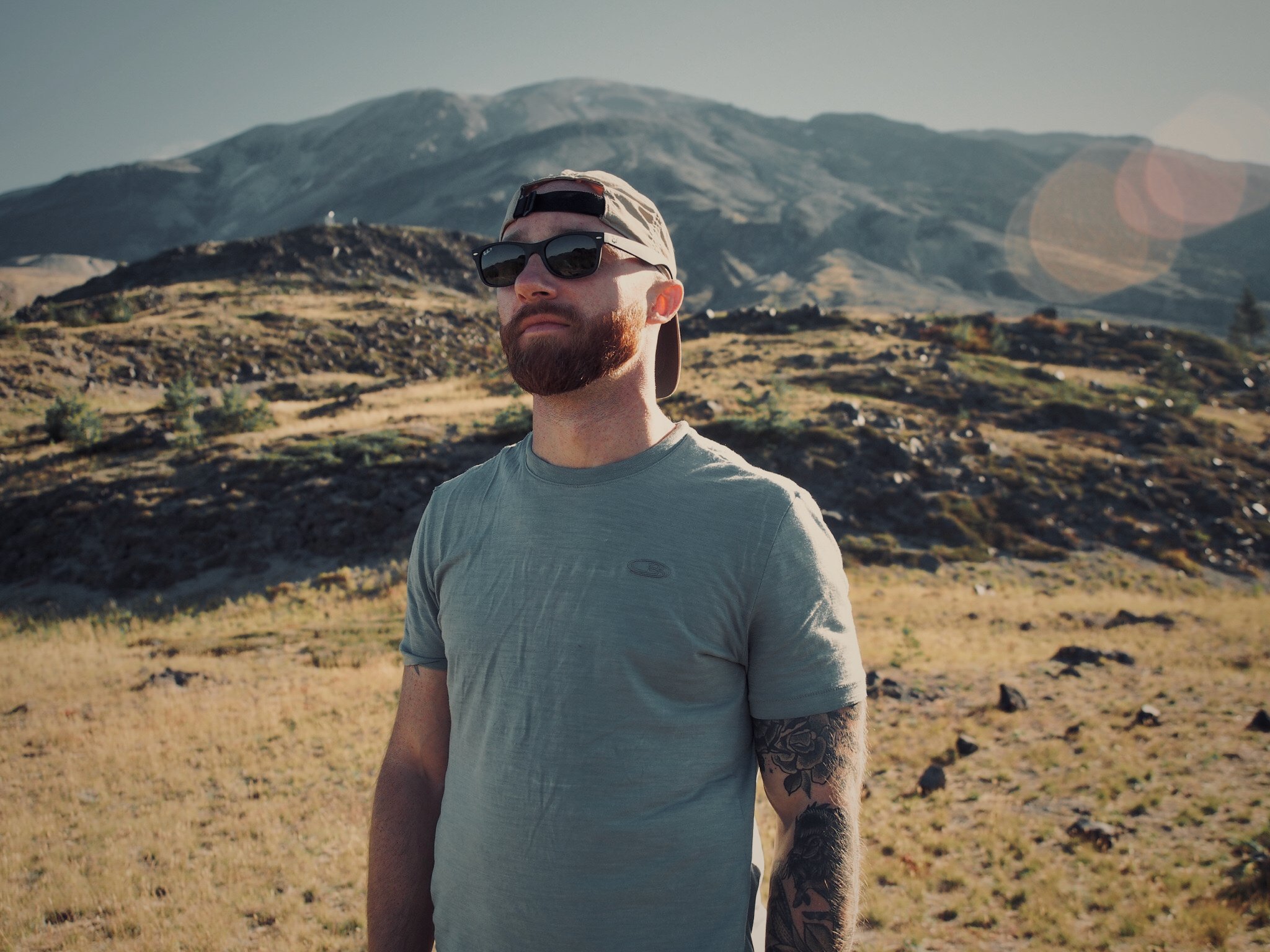



A hands-on review of the Argali Guide X Trekking Poles, tested over 40 miles on the Timberline Trail. This review includes a video walkthrough of their unique features, like a hidden thread that turns your poles into something more.